Opis produktu
Opinie
Spis treści
Nowadays, a modern, knowledge-based economy is the key to attaining and sustaining a competitive advantage. Thus, countries undertake various measures to foster development and acquisition of intellectual property and implementation of breakthrough technologies. These measures may include tax incentives. However, what is often forgotten is that tax systems may also discourage R&D activities and IP transfers, or simply remain neutral.
\n
\n
This book is a result of the international conference "Tax Aspects of Research and Development - Towards More Sustainable Development in the EU" organised by the Centre of Tax Documentation and Studies of the University of Łodź, Poland, on 16 December 2011.
\n
\n
The idea behind the book is to provide an overview of the income tax aspects of R&D activities and IP transfers and licensing in the EU Member States. The authors aim to assess how tax measures may influence development and movement of IP between the EU Member States and how they relate to the rules on freedom of movement, state aid and competition.
\n
\n
Specific issues dealt with in thematic reports include R&D- and IP-related tax incentives applicable in selected EU Member States and state aid limitations thereof, tax measures posing restrictions to cross-border R&D activities and transfers of IP (e.g. exit taxes, CFC rules) as well as transfer pricing aspects of IP transfers. These specific issues are summarised in a general report, whereby some conclusions are drawn.
\n
\n
Contributors: Anuschka Bakker, Philip Baker, Ewa Bienkowska, Aneta Blażejewska-Gaczyńska, Giammarco Cottani, Monika Laskowska, Raymond Luja, Dominik Mączyński, Anna Nykiel-Mateo, Onno Ruding, Ryszard Sowiński, Frans Vanistendael, Mauritz von Einem, Adam Zalasiński.
\n
\n
\n
\n
This book is a result of the international conference "Tax Aspects of Research and Development - Towards More Sustainable Development in the EU" organised by the Centre of Tax Documentation and Studies of the University of Łodź, Poland, on 16 December 2011.
\n
\n
The idea behind the book is to provide an overview of the income tax aspects of R&D activities and IP transfers and licensing in the EU Member States. The authors aim to assess how tax measures may influence development and movement of IP between the EU Member States and how they relate to the rules on freedom of movement, state aid and competition.
\n
\n
Specific issues dealt with in thematic reports include R&D- and IP-related tax incentives applicable in selected EU Member States and state aid limitations thereof, tax measures posing restrictions to cross-border R&D activities and transfers of IP (e.g. exit taxes, CFC rules) as well as transfer pricing aspects of IP transfers. These specific issues are summarised in a general report, whereby some conclusions are drawn.
\n
\n
Contributors: Anuschka Bakker, Philip Baker, Ewa Bienkowska, Aneta Blażejewska-Gaczyńska, Giammarco Cottani, Monika Laskowska, Raymond Luja, Dominik Mączyński, Anna Nykiel-Mateo, Onno Ruding, Ryszard Sowiński, Frans Vanistendael, Mauritz von Einem, Adam Zalasiński.
\n
\n
Cechy
| Rodzaj: | e-book |
| Format pliku: |
|
| Autor: | Adam Zalasiński, Włodzimierz Nykiel |
| Język publikacji: | polski |
| Rok wydania: | 2014 |
| Serie: | Biblioteka Przeglądu Podatkowego |
Preface | str. 15
Keynote Speeches | str. 17
H. Onno Ruding
The European Union, the Internal Market, Euro-area Crisis and Harmonisation of Corporate Taxes | str. 19
1. The euro area and the EU: internal market and corporate taxation | str. 19
2. National diff erences in corporate tax rates | str. 21
3. Harmonisation of the tax rate vs. the tax base | str. 22
4. France and Germany | str. 25
5. Harmonisation of the tax base (CCCTB) | str. 26
Frans Vanistendael
Should Poland Access Euroland? | str. 28
1. Why a contribution on the euro crisis in a book on R&D? | str. 28
2. Two very diff erent objectives of the EU | str. 29
2.1. The objective of the internal market | str. 29
2.2. The objective of the Economic and Monetary Union | str. 30
2.3. The diff erence between the two objectives | str. 30
3. Principles governing the Economic and Monetary Union | str. 30
3.1. Th ree government functions in public finance | str. 30
3.2. The stabilisation function | str. 31
3.3. The level of government responsible for the stabilisation function in the eurozone | str. 31
4. The legal framework of taxation in the European EMU | str. 32
4.1. Taxing power in indirect taxation | str. 32
4.2. Taxing power in direct taxation | str. 33
4.3. Impact of the fundamental freedoms on taxing power | str. 33
5. The framework for economic governance in the European EMU | str. 34
5.1. The existing treaty framework for economic governance | str. 35
5.2. New procedures for economic governance | str. 36
5.3. Role of the European Central Bank | str. 37
6. The institutional framework of the European EMU | str. 39
7. The budgetary framework in the European EMU | str. 40
8. Preliminary conclusion | str. 41
9. Solution: federalisation of the stabilisation function | str. 42
9.1. Transfer of the stabilisation function to the European level | str. 42
9.2. Indirect budgetary monitoring | str. 43
9.3. Euro power to table a motion of no confidence in a national parliament | str. 44
9.4. Emergency powers in the case of financial crisis | str. 44
10. Procedural way to reform | str. 46
10.1. Reforms within the general framework of the European treaties | str. 46
10.2. Specific rules in accordance with Chapter 4 TFEU | str. 47
10.3. Establishment of a specific euro budget authority | str. 48
11. What about Poland? | str. 49
11.1. The figures | str. 49
11.2. The rules | str. 51
11.3. The conclusion | str. 52
Part One
General Report | str. 53
Adam Zalasiński
General Report - Tax Aspects of Research and Development within the European Union | str. 55
1. General remarks | str. 55
2. The structure of the R&D tax system in EU Member States | str. 56
2.1. Research and development activities | str. 56
2.2. (Tax) Legislative background | str. 57
2.2.1. Domestic law | str. 57
2.2.2. EU law | str. 58
2.2.3. International law - double taxation conventions | str. 59
2.3. The approach of tax legislation towards R&D activities | str. 59
2.3.1. R&D-neutral tax legislation | str. 59
2.3.2. R&D incentives | str. 60
2.3.3. (Cross-border) R&D disincentives | str. 61
2.3.4. Rules aff ecting the scope of R&D tax incentives and R&D tax disincentives - "rules of the second degree" | str. 61
3. The dynamic of the R&D tax system in EU Member States | str. 62
3.1. The actors and their roles | str. 62
3.2. The continuous development and interaction of the elements of the system | str. 63
4. Main conclusions of the thematic reports | str. 64
4.1. EU Control of State Aid and R&D Tax Incentives | str. 64
4.2. R&D Mobility and EU Law - Application of the Fundamental Freedoms | str. 67
4.3. EU Secondary Tax Legislation and R&D Mobility in the EU - Application of the Interest and Royalties Directive | str. 71
4.4. Transfer Pricing Aspects of Transfers of Intellectual Property | str. 74
Part Two
EU Control of State Aid and R&D Tax Incetives | str. 77
Anna Nykiel-Mateo
State Aid Limitations on Fiscal Support to R&D&I | str. 79
1. General remarks | str. 79
2. Qualification of fiscal measures as state aid | str. 79
2.1. Advantage | str. 80
2.2. Granted by the state or through state resources | str. 80
2.3. Selectivity | str. 81
2.4. Distortion of competition and eff ect on trade | str. 83
3. The GBER | str. 83
4. The R&D&I Framework - the balancing test | str. 84
Raymond H.C. Luja
R&D, Innovation and Tax Incentives: Do Th ey Have a Joint Future under State Aid Rules? | str. 89
1. Introduction | str. 89
2. Does the CCCTB allow for R&D incentives? | str. 90
2.1. Can R&D benefits be general? | str. 90
2.2. Are national R&D incentives blocked? | str. 90
3. The GBER | str. 92
4. Should R&D incentives be granted regardless of legal form? | str. 94
5. R&D incentives between state aid and fundamental freedoms | str. 95
6. Conclusion | str. 97
Part Th ree
R&D Mobility and EU Law - Application of the Fundamental Freedoms | str. 99
Adam Zalasiński
General Prohibition of Restrictions on Cross-border R&D Activities and IP Mobility - Application of the TFEU Freedoms | str. 101
1. General remarks | str. 101
2. Basic concepts of the internal market | str. 102
2.1. The concept of discrimination | str. 102
2.2. The concept of restriction on free movement | str. 103
3. Prohibition of tax discrimination/restriction on cross-border IP development and migration - examples of the ECJ's case law | str. 110
3.1. Case C-254/97 Société Baxter - (covert) discrimination infringing the right of establishment | str. 110
3.2. Case C-39/04 Laboratoires Fournier SA - restriction on the free movement of services | str. 111
3.3. Case C-10/10 Commission v. Austria - restriction on the free movement of capital | str. 112
4. Conclusion | str. 115
Frans Vanistendael
R&D Mobility in the EU and the Fundamental Freedoms | str. 116
1. Introduction: scope and structure of the topic | str. 116
2. Transfer of intangibles in international taxation | str. 117
3. EU Merger Directive: transfer of entities and transfer of seat | str. 118
4. Transfer of residence and exit tax | str. 121
4.1. Daily Mail case | str. 121
4.2. Lasteyrie du Saillant and N. cases | str. 124
4.3. National Grid Indus (NGI) case | str. 126
4.4. Conclusion on transfer of residence and exit tax | str. 129
5. Some critical remarks: comparing EU and international tax principles | str. 130
6. Conclusion: how should the taxing power be allocated? | str. 133
Philip Baker
CFC Aspects of Intellectual Property | str. 135
1. Controlled foreign company rules on passive income from royalties | str. 135
2. The impact of CFC rules | str. 135
3. Problems for research and development stemming from CFC rules | str. 138
4. European Court case law on CFC rules | str. 140
5. Problems for research and development from CFC rules in the European Union | str. 142
Part Four
EU Secondary Tax Legislation and R&D Mobility in the EU - Application of the Interest and Royalties Directive | str. 145
Mauritz von Einem
The EU Interest and Royalties Directive: Current Issues | str. 147
1. Introduction | str. 147
2. Overview of the current Interest and Royalties Directive | str. 149
2.1. Personal scope | str. 149
2.2. Substantive scope | str. 151
2.3. Legal consequences | str. 153
2.4. Status of implementation | str. 153
3. ECJ case law | str. 155
3.1. Scheuten Solar Technology case | str. 155
3.2. Other judgments | str. 157
3.3. Conclusion | str. 158
4. Deficiencies of the current Directive | str. 158
4.1. Subject-to-tax requirement | str. 158
4.2. Other aspects | str. 161
4.2.1. Associated companies | str. 161
4.2.2. Internal payments | str. 161
5. Commission Proposal | str. 162
6. Suggestions and outlook | str. 164
Part Five
Transfer Pricing Aspects of Transfers of Intellectual Property | str. 169
Giammarco Cottani
Transfer Pricing Aspects of Business Restructurings - an International Perspective | str. 171
1. Introduction | str. 171
1.1. Importance | str. 171
2. Types of business restructurings | str. 173
2.1. Common tax consequences arising from business restructurings | str. 178
2.1.1. Transfer of functions and risks arising from business restructurings | str. 183
2.1.2. Transfer of intangibles arising from business restructurings | str. 183
2.1.3. Transfer of going concern | str. 184
2.1.4. Termination or substantial renegotiation of existing arrangements | str. 186
3. Operational considerations | str. 187
4. Conclusion | str. 188
Aneta Błażejewska-Gaczyńska
Business Restructuring - Practical Application of Transfer Pricing Rules: a Case Study | str. 189
1. Introduction | str. 189
2. Business restructuring - definitions and practice | str. 191
2.1. Business restructuring - definition | str. 191
2.2. Business restructuring - examples | str. 191
2.3. Business restructurings - key points | str. 194
2.3.1. Special considerations for risks allocation | str. 195
2.3.1.1. Contractual terms | str. 195
2.3.1.2. Significance of risks allocated - examples | str. 196
2.3.1.3. Control over risks allocated | str. 198
2.3.2. Compensation for restructuring | str. 199
2.3.2.1. Business reasons for the restructuring/ alternative options realistically available to the parties | str. 202
2.3.3. Remuneration of post-restructuring transactions | str. 204
2.3.4. Recognition of the actual transactions undertaken | str. 206
Giammarco Cottani
Transfer Pricing Aspects of Transfers of Intellectual Property | str. 208
1. Overview | str. 208
1.2. Business restructurings and domestic anti-abuse rules | str. 209
2. Tax eff ects of cross-border business restructurings: overview | str. 210
2.1. Transfer of risks and functions | str. 211
2.2. Transfer of intangible assets | str. 212
2.3. Transfer of going concern | str. 214
2.4. Termination or substantial renegotiation of existing arrangements | str. 216
2.5. Recognition of the actual transactions undertaken | str. 217
2.6. Permanent establishment issues | str. 217
3. Change of a full-fledged distributor into commissionaire or low-risk distributor | str. 219
3.1. Change of manufacturing activities | str. 222
3.2. Centralisation of intangible property rights and research and development activities in a specific IP company | str. 224
4. Relationship to EU law | str. 227
5. Summary and conclusions | str. 227
Anuschka Bakker
Intangibles: a Legal, Accounting and Tax Perspective | str. 231
1. Introduction | str. 231
2. Setting the scene | str. 233
3. Definition of intangibles | str. 235
3.1. Value drivers | str. 236
3.2. Legal definition | str. 236
3.3. Tax | str. 238
3.3.1. Article 12 OECD Model Convention | str. 238
3.3.2. Transfer pricing purposes | str. 239
3.3.3. Various definitions used by countries | str. 242
3.4. Valuation | str. 244
3.5. Accounting | str. 246
4. Valuation | str. 247
4.1. TP methods | str. 247
4.2. Financial valuation methods | str. 253
5. Conclusion | str. 255
Monika Laskowska
Transfer of Profit Generators Aiming to Exploit Location Advantages in the Area of Research and Development | str. 256
1. Introduction | str. 256
2. Location savings | str. 258
3. Location specific advantages (LSAs) and location rent | str. 259
4. Existence and quantification of LSAs | str. 263
5. Bargaining position/Attribution of location rent | str. 265
6. Computation | str. 266
7. R&D in Poland | str. 268
8. Conclusion | str. 269
Part Six
Comparative Aspects of Taxation of Research and Development | str. 271
Dominik Mączyński, Ryszard Sowiński
R&D Incentives under Polish Tax Law | str. 273
1. Introduction | str. 273
2. Terminology | str. 273
3. Income tax incentives supporting R&D activity | str. 276
3.1. Preferential treatment with respect to income costs | str. 276
3.2. Depreciation based on preferential principles | str. 277
3.3. Deduction of R&D costs from the taxable base | str. 278
3.4. Exemption from tax of a part of income assigned for statutory activity | str. 280
4. Other tax R&D incentives | str. 280
4.1. VAT | str. 280
4.2. Preferences within the scope of land tax | str. 283
4.3. Preferences within the scope of stamp duty | str. 283
5. Summary | str. 283
Ewa Bienkowska
R&D Incentives in Selected EU Member States | str. 287
1. Introduction | str. 287
2. Selected R&D schemes in the European Union | str. 293
2.1. The Netherlands | str. 293
2.1.1. R&D tax incentives in the Netherlands | str. 293
2.1.2. Innovation box in the Netherlands | str. 294
2.1.3. Amendments to the Netherlands R&D tax system | str. 295
2.2. The United Kingdom | str. 295
2.2.1. R&D tax incentives in the United Kingdom | str. 295
2.2.2. UK patent box | str. 297
2.2.3. Amendments to the UK R&D tax system | str. 298
2.3. Spain | str. 299
2.3.1. R&D tax incentives in Spain | str. 299
2.3.2. Spanish patent box | str. 300
3. R&D tax incentives and the way forward to enhance the EU innovativeness | str. 301
3.1. Current state of R&D taxation in the European Union | str. 301
3.2. Recommendations of R&D tax treatment in the European Union | str. 304
4. Conclusion | str. 305
List of Authors | str. 309
Centre of Tax Documentation and Studies | str. 315
Keynote Speeches | str. 17
H. Onno Ruding
The European Union, the Internal Market, Euro-area Crisis and Harmonisation of Corporate Taxes | str. 19
1. The euro area and the EU: internal market and corporate taxation | str. 19
2. National diff erences in corporate tax rates | str. 21
3. Harmonisation of the tax rate vs. the tax base | str. 22
4. France and Germany | str. 25
5. Harmonisation of the tax base (CCCTB) | str. 26
Frans Vanistendael
Should Poland Access Euroland? | str. 28
1. Why a contribution on the euro crisis in a book on R&D? | str. 28
2. Two very diff erent objectives of the EU | str. 29
2.1. The objective of the internal market | str. 29
2.2. The objective of the Economic and Monetary Union | str. 30
2.3. The diff erence between the two objectives | str. 30
3. Principles governing the Economic and Monetary Union | str. 30
3.1. Th ree government functions in public finance | str. 30
3.2. The stabilisation function | str. 31
3.3. The level of government responsible for the stabilisation function in the eurozone | str. 31
4. The legal framework of taxation in the European EMU | str. 32
4.1. Taxing power in indirect taxation | str. 32
4.2. Taxing power in direct taxation | str. 33
4.3. Impact of the fundamental freedoms on taxing power | str. 33
5. The framework for economic governance in the European EMU | str. 34
5.1. The existing treaty framework for economic governance | str. 35
5.2. New procedures for economic governance | str. 36
5.3. Role of the European Central Bank | str. 37
6. The institutional framework of the European EMU | str. 39
7. The budgetary framework in the European EMU | str. 40
8. Preliminary conclusion | str. 41
9. Solution: federalisation of the stabilisation function | str. 42
9.1. Transfer of the stabilisation function to the European level | str. 42
9.2. Indirect budgetary monitoring | str. 43
9.3. Euro power to table a motion of no confidence in a national parliament | str. 44
9.4. Emergency powers in the case of financial crisis | str. 44
10. Procedural way to reform | str. 46
10.1. Reforms within the general framework of the European treaties | str. 46
10.2. Specific rules in accordance with Chapter 4 TFEU | str. 47
10.3. Establishment of a specific euro budget authority | str. 48
11. What about Poland? | str. 49
11.1. The figures | str. 49
11.2. The rules | str. 51
11.3. The conclusion | str. 52
Part One
General Report | str. 53
Adam Zalasiński
General Report - Tax Aspects of Research and Development within the European Union | str. 55
1. General remarks | str. 55
2. The structure of the R&D tax system in EU Member States | str. 56
2.1. Research and development activities | str. 56
2.2. (Tax) Legislative background | str. 57
2.2.1. Domestic law | str. 57
2.2.2. EU law | str. 58
2.2.3. International law - double taxation conventions | str. 59
2.3. The approach of tax legislation towards R&D activities | str. 59
2.3.1. R&D-neutral tax legislation | str. 59
2.3.2. R&D incentives | str. 60
2.3.3. (Cross-border) R&D disincentives | str. 61
2.3.4. Rules aff ecting the scope of R&D tax incentives and R&D tax disincentives - "rules of the second degree" | str. 61
3. The dynamic of the R&D tax system in EU Member States | str. 62
3.1. The actors and their roles | str. 62
3.2. The continuous development and interaction of the elements of the system | str. 63
4. Main conclusions of the thematic reports | str. 64
4.1. EU Control of State Aid and R&D Tax Incentives | str. 64
4.2. R&D Mobility and EU Law - Application of the Fundamental Freedoms | str. 67
4.3. EU Secondary Tax Legislation and R&D Mobility in the EU - Application of the Interest and Royalties Directive | str. 71
4.4. Transfer Pricing Aspects of Transfers of Intellectual Property | str. 74
Part Two
EU Control of State Aid and R&D Tax Incetives | str. 77
Anna Nykiel-Mateo
State Aid Limitations on Fiscal Support to R&D&I | str. 79
1. General remarks | str. 79
2. Qualification of fiscal measures as state aid | str. 79
2.1. Advantage | str. 80
2.2. Granted by the state or through state resources | str. 80
2.3. Selectivity | str. 81
2.4. Distortion of competition and eff ect on trade | str. 83
3. The GBER | str. 83
4. The R&D&I Framework - the balancing test | str. 84
Raymond H.C. Luja
R&D, Innovation and Tax Incentives: Do Th ey Have a Joint Future under State Aid Rules? | str. 89
1. Introduction | str. 89
2. Does the CCCTB allow for R&D incentives? | str. 90
2.1. Can R&D benefits be general? | str. 90
2.2. Are national R&D incentives blocked? | str. 90
3. The GBER | str. 92
4. Should R&D incentives be granted regardless of legal form? | str. 94
5. R&D incentives between state aid and fundamental freedoms | str. 95
6. Conclusion | str. 97
Part Th ree
R&D Mobility and EU Law - Application of the Fundamental Freedoms | str. 99
Adam Zalasiński
General Prohibition of Restrictions on Cross-border R&D Activities and IP Mobility - Application of the TFEU Freedoms | str. 101
1. General remarks | str. 101
2. Basic concepts of the internal market | str. 102
2.1. The concept of discrimination | str. 102
2.2. The concept of restriction on free movement | str. 103
3. Prohibition of tax discrimination/restriction on cross-border IP development and migration - examples of the ECJ's case law | str. 110
3.1. Case C-254/97 Société Baxter - (covert) discrimination infringing the right of establishment | str. 110
3.2. Case C-39/04 Laboratoires Fournier SA - restriction on the free movement of services | str. 111
3.3. Case C-10/10 Commission v. Austria - restriction on the free movement of capital | str. 112
4. Conclusion | str. 115
Frans Vanistendael
R&D Mobility in the EU and the Fundamental Freedoms | str. 116
1. Introduction: scope and structure of the topic | str. 116
2. Transfer of intangibles in international taxation | str. 117
3. EU Merger Directive: transfer of entities and transfer of seat | str. 118
4. Transfer of residence and exit tax | str. 121
4.1. Daily Mail case | str. 121
4.2. Lasteyrie du Saillant and N. cases | str. 124
4.3. National Grid Indus (NGI) case | str. 126
4.4. Conclusion on transfer of residence and exit tax | str. 129
5. Some critical remarks: comparing EU and international tax principles | str. 130
6. Conclusion: how should the taxing power be allocated? | str. 133
Philip Baker
CFC Aspects of Intellectual Property | str. 135
1. Controlled foreign company rules on passive income from royalties | str. 135
2. The impact of CFC rules | str. 135
3. Problems for research and development stemming from CFC rules | str. 138
4. European Court case law on CFC rules | str. 140
5. Problems for research and development from CFC rules in the European Union | str. 142
Part Four
EU Secondary Tax Legislation and R&D Mobility in the EU - Application of the Interest and Royalties Directive | str. 145
Mauritz von Einem
The EU Interest and Royalties Directive: Current Issues | str. 147
1. Introduction | str. 147
2. Overview of the current Interest and Royalties Directive | str. 149
2.1. Personal scope | str. 149
2.2. Substantive scope | str. 151
2.3. Legal consequences | str. 153
2.4. Status of implementation | str. 153
3. ECJ case law | str. 155
3.1. Scheuten Solar Technology case | str. 155
3.2. Other judgments | str. 157
3.3. Conclusion | str. 158
4. Deficiencies of the current Directive | str. 158
4.1. Subject-to-tax requirement | str. 158
4.2. Other aspects | str. 161
4.2.1. Associated companies | str. 161
4.2.2. Internal payments | str. 161
5. Commission Proposal | str. 162
6. Suggestions and outlook | str. 164
Part Five
Transfer Pricing Aspects of Transfers of Intellectual Property | str. 169
Giammarco Cottani
Transfer Pricing Aspects of Business Restructurings - an International Perspective | str. 171
1. Introduction | str. 171
1.1. Importance | str. 171
2. Types of business restructurings | str. 173
2.1. Common tax consequences arising from business restructurings | str. 178
2.1.1. Transfer of functions and risks arising from business restructurings | str. 183
2.1.2. Transfer of intangibles arising from business restructurings | str. 183
2.1.3. Transfer of going concern | str. 184
2.1.4. Termination or substantial renegotiation of existing arrangements | str. 186
3. Operational considerations | str. 187
4. Conclusion | str. 188
Aneta Błażejewska-Gaczyńska
Business Restructuring - Practical Application of Transfer Pricing Rules: a Case Study | str. 189
1. Introduction | str. 189
2. Business restructuring - definitions and practice | str. 191
2.1. Business restructuring - definition | str. 191
2.2. Business restructuring - examples | str. 191
2.3. Business restructurings - key points | str. 194
2.3.1. Special considerations for risks allocation | str. 195
2.3.1.1. Contractual terms | str. 195
2.3.1.2. Significance of risks allocated - examples | str. 196
2.3.1.3. Control over risks allocated | str. 198
2.3.2. Compensation for restructuring | str. 199
2.3.2.1. Business reasons for the restructuring/ alternative options realistically available to the parties | str. 202
2.3.3. Remuneration of post-restructuring transactions | str. 204
2.3.4. Recognition of the actual transactions undertaken | str. 206
Giammarco Cottani
Transfer Pricing Aspects of Transfers of Intellectual Property | str. 208
1. Overview | str. 208
1.2. Business restructurings and domestic anti-abuse rules | str. 209
2. Tax eff ects of cross-border business restructurings: overview | str. 210
2.1. Transfer of risks and functions | str. 211
2.2. Transfer of intangible assets | str. 212
2.3. Transfer of going concern | str. 214
2.4. Termination or substantial renegotiation of existing arrangements | str. 216
2.5. Recognition of the actual transactions undertaken | str. 217
2.6. Permanent establishment issues | str. 217
3. Change of a full-fledged distributor into commissionaire or low-risk distributor | str. 219
3.1. Change of manufacturing activities | str. 222
3.2. Centralisation of intangible property rights and research and development activities in a specific IP company | str. 224
4. Relationship to EU law | str. 227
5. Summary and conclusions | str. 227
Anuschka Bakker
Intangibles: a Legal, Accounting and Tax Perspective | str. 231
1. Introduction | str. 231
2. Setting the scene | str. 233
3. Definition of intangibles | str. 235
3.1. Value drivers | str. 236
3.2. Legal definition | str. 236
3.3. Tax | str. 238
3.3.1. Article 12 OECD Model Convention | str. 238
3.3.2. Transfer pricing purposes | str. 239
3.3.3. Various definitions used by countries | str. 242
3.4. Valuation | str. 244
3.5. Accounting | str. 246
4. Valuation | str. 247
4.1. TP methods | str. 247
4.2. Financial valuation methods | str. 253
5. Conclusion | str. 255
Monika Laskowska
Transfer of Profit Generators Aiming to Exploit Location Advantages in the Area of Research and Development | str. 256
1. Introduction | str. 256
2. Location savings | str. 258
3. Location specific advantages (LSAs) and location rent | str. 259
4. Existence and quantification of LSAs | str. 263
5. Bargaining position/Attribution of location rent | str. 265
6. Computation | str. 266
7. R&D in Poland | str. 268
8. Conclusion | str. 269
Part Six
Comparative Aspects of Taxation of Research and Development | str. 271
Dominik Mączyński, Ryszard Sowiński
R&D Incentives under Polish Tax Law | str. 273
1. Introduction | str. 273
2. Terminology | str. 273
3. Income tax incentives supporting R&D activity | str. 276
3.1. Preferential treatment with respect to income costs | str. 276
3.2. Depreciation based on preferential principles | str. 277
3.3. Deduction of R&D costs from the taxable base | str. 278
3.4. Exemption from tax of a part of income assigned for statutory activity | str. 280
4. Other tax R&D incentives | str. 280
4.1. VAT | str. 280
4.2. Preferences within the scope of land tax | str. 283
4.3. Preferences within the scope of stamp duty | str. 283
5. Summary | str. 283
Ewa Bienkowska
R&D Incentives in Selected EU Member States | str. 287
1. Introduction | str. 287
2. Selected R&D schemes in the European Union | str. 293
2.1. The Netherlands | str. 293
2.1.1. R&D tax incentives in the Netherlands | str. 293
2.1.2. Innovation box in the Netherlands | str. 294
2.1.3. Amendments to the Netherlands R&D tax system | str. 295
2.2. The United Kingdom | str. 295
2.2.1. R&D tax incentives in the United Kingdom | str. 295
2.2.2. UK patent box | str. 297
2.2.3. Amendments to the UK R&D tax system | str. 298
2.3. Spain | str. 299
2.3.1. R&D tax incentives in Spain | str. 299
2.3.2. Spanish patent box | str. 300
3. R&D tax incentives and the way forward to enhance the EU innovativeness | str. 301
3.1. Current state of R&D taxation in the European Union | str. 301
3.2. Recommendations of R&D tax treatment in the European Union | str. 304
4. Conclusion | str. 305
List of Authors | str. 309
Centre of Tax Documentation and Studies | str. 315
Inni klienci oglądali również
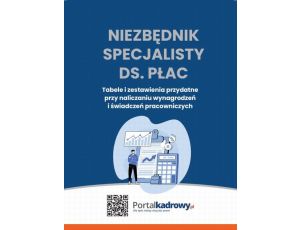
Praca zbiorowa
Niezbędnik specjalisty ds. płac Tabele i zestawienia przydatne przy rozliczaniu wynagrodzeń i świadczeń pracowniczych
55,99 zł
79,90 zł
-30%
Do koszyka

Katarzyna Grosicka, Leszek Grosicki, Przemysław Grosicki
Organizacja i zadania terenowych organów administracji rządowej
32,99 zł
39,00 zł
-15%
Do koszyka
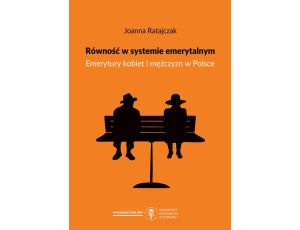
Joanna Ratajczak
Równość w systemie emerytalnym. Emerytury kobiet i mężczyzn w Polsce
15,99 zł
18,00 zł
-11%
Do koszyka

Barbara Matysik, Bartłomiej Mazurkiewicz, Bożena Tyra, Dominik Kucharski, Iwona Kusio-Szalak, Iwona Sierpowska, Magdalena Januszewska, Michał Bochenek, Żanetta Gawarkiewicz
Opłaty za pobyt w domu pomocy społecznej
49,12 zł
59,00 zł
-17%
Do koszyka

Ewa Kosecka, Łukasz Matys
Jak napisać testament poradnik praktyczny
10,99 zł
14,90 zł
-26%
Do koszyka

Barbara Matysik, Bartłomiej Mazurkiewicz, Bożena Tyra, Dominik Kucharski, Iwona Kusio-Szalak, Iwona Sierpowska, Magdalena Januszewska, Michał Bochenek, Żanetta Gawarkiewicz
Opłaty za pobyt w domu pomocy społecznej
51,99 zł
59,00 zł
-12%
Do koszyka

Grzegorz Blicharz, Joanna Kruszyńska-Kola
Prawo rzymskie. Przed egzaminem
36,99 zł
42,00 zł
-12%
Do koszyka

Edward Janeczko, Teresa Janeczko, Wiktor Karpowicz
Wzory aktów notarialnych z komentarzem
193,99 zł
222,00 zł
-13%
Do koszyka
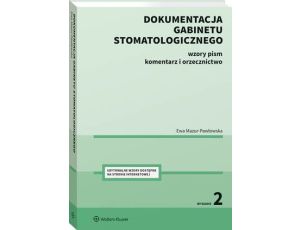
Ewa Mazur-Pawłowska
Dokumentacja gabinetu stomatologicznego. Wzory pism, komentarz i orzecznictwo
95,99 zł
110,00 zł
-13%
Do koszyka
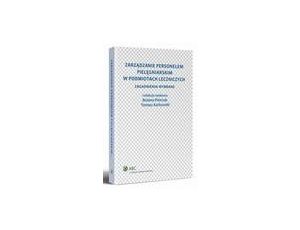
Bożena Pietrzak, Tomasz Adam Karkowski
Zarządzanie personelem pielęgniarskim w podmiotach leczniczych. Zagadnienia wybrane
51,99 zł
59,00 zł
-12%
Do koszyka
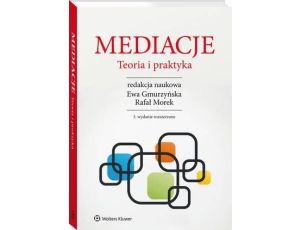
Adam Moniuszko, Agata Gójska, Agnieszka Siedlecka-Andrychowicz, Aleksandra Winiarska, Andrzej Szpor, Anna Cybulko, Ewa Gmurzyńska, Magdalena Tulibacka, Magdalena Żurawska, Michał Czapski, Monika Stachura, Paweł Waszkiewicz, Rafał Morek, Stanisław Kordasiewicz
Mediacje. Teoria i praktyka
71,99 zł
84,00 zł
-14%
Do koszyka

Grzegorz Mazgaj, Wojciech Szczepański
IBM i2 Analyst’s Notebook 8.9 dla analityków kryminalnych
21,99 zł
31,50 zł
-30%
Do koszyka